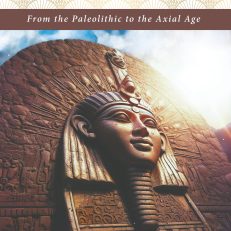Description
A History of Esotericism – From the Paleolithic to the Axial Age introduces the history of esotericism, the theoretical study and attainment of mystical, occult, “inner” reality. It begins with an introduction to esotericism and gnosis as a fourth way of knowing alongside reason, spirituality, and science. Rather than situating esotericism and gnosis in a timeless, ahistorical world, it is embedded in history as a human phenomenon that contains a transcendent element within society in keeping with historical circumstances.
The story of gnosis is, therefore, also the story of the awakening of consciousness, and hence this review begins at the very beginning, in deep time with the origin of consciousness. From there, it progresses to early humans. The development of spiritual and transpersonal consciousness and the understanding of inner reality is followed through ancient and modern shamanism, the Neolithic revolution, megalith builders, the Great Mother archetype, Proto-Indo-Europeans, Mesopotamian Gods and epics, and Egypt with its God-Kings and profound knowledge of the afterlife. The book then examines the great Axial Age revolution:
- The Persian development of morality-based spirituality and ‘good vs. evil.’
- The Indian metaphysical revolution with themes such as reincarnation, karma, and spiritual enlightenment.
- The Chinese philosophy of the I Ching, Taoism, and the polarity of Yin and Yang.
- The Abrahamic discovery of monotheism.
- The culture, philosophy, cosmology, psychology, and proto-science of Bronze Age, Ancient, and Classical Greece.
Additionally, A History of Esotericism discusses topics such as the relationship between faith, reason, and gnosis, the evolution of consciousness, the spirit world, the association between myth and archetype, the afterlife and the nature of Gods, Earth energies, the imaginal world, the Jungian unconscious, symbolism, and egregores. The associations between magical, mythical, and metaphysical thinking, the nature of the soul, and consciousness, are also considered.
A comprehensive glossary is included.








